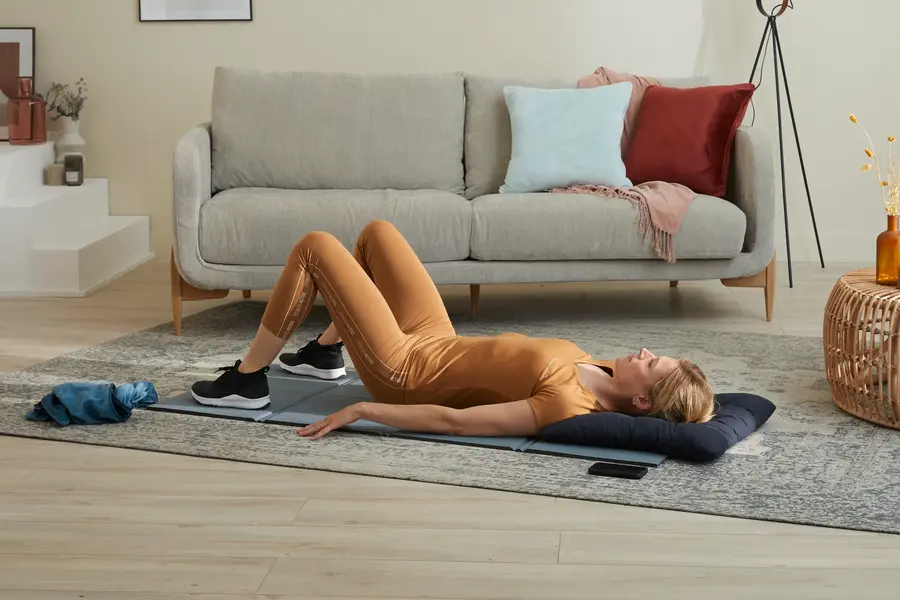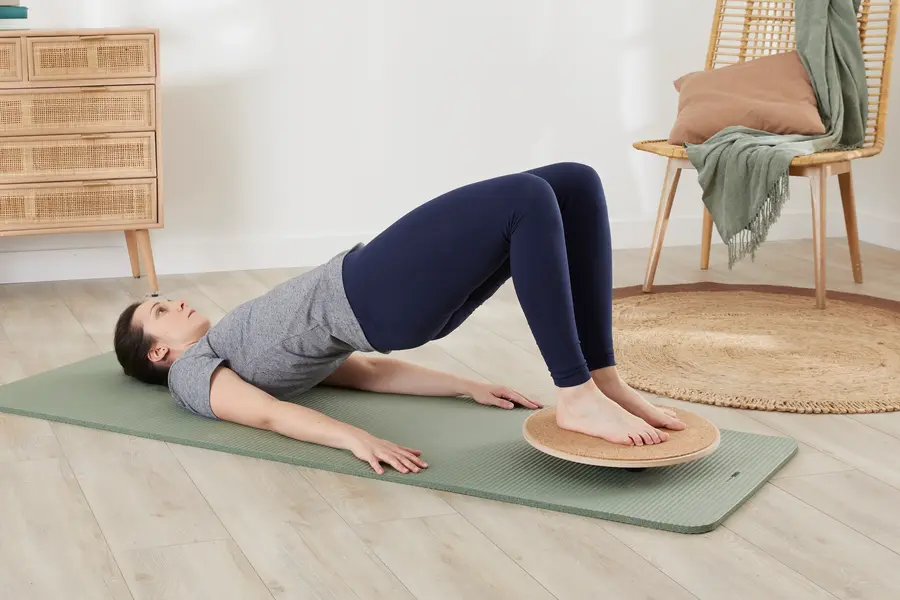7 tips for avoiding sore muscles & injuries
In this blog we discuss top tips for avoiding muscle soreness & injuries following workouts. Recovery is key, let’s discover how we can recover optimally together.
With the start of the new year, you might be feeling like your body is aching all over. Or maybe you've been injured and haven't had the chance to work out for a while. Either way, it's important to take some preventative measures so that you can avoid getting injured or sore.
Here are some of our tips for avoiding sore muscles and injuries during this time:

1. Ease into it
The best way to avoid sore muscles and injuries is by easing into it. Start slow, take regular breaks, and don’t push yourself too hard. If you feel pain or discomfort while exercising, stop immediately and rest until your body has recovered enough that you can continue at a lighter intensity level.
2. Drink plenty of water
Drinking plenty of water before and after exercise is one of the best ways to avoid sore muscles and injuries.
Drinking water throughout the day is also beneficial for your overall health (not just for your aching muscles), since it helps keep your body hydrated. Try to drink at least 1.5 - 2 litres of water per day, that way you'll be sure to stay hydrated, even when you're not exercising!
If you're new to increasing fluids, or you tend to not drink as much as you know you should, start by drinking more than usual during exercise or physical activity; this will help make sure that your muscles are properly hydrated so they don't become injured from lack of oxygen supply from dehydration.
Another tip is to try diluted juices, or maybe even buy a bottle and set a target to fully drink and refill the bottle 2, 3 or even 4 times a day (depending on the size of the bottle). But be warned, you might take more bathroom breaks in the first few weeks! Your body will get used to it soon, don’t worry.
Shop Water Bottles at Decathlon now
Another option if you’re concerned about dehydration, is to look at isotonics and electrolytes. Replacing the electrolytes lost during exercise promotes proper rehydration, which is important in delaying the onset of fatigue and other symptoms of dehydration.
Shop isotonic & electrolytes at Decathlon
3. Warm up and cool down
You should warm up before exercise and cool down after activity. Your body needs to be warm if you're going to work out, or you would be susceptible to more injuries & strains.
A good warm-up involves short bursts of activity such as jogging or jumping rope; these help get blood flowing through your body, which is what allows muscles more oxygen than they'd get if there was no movement at all. The best way for someone who's just getting into exercising again (or who hasn't exercised in a long time) is simply walking around the block, or on a treadmill, exercise bike or stair master if you are in the gym).
A cool down should consist of transitioning from intense activity back to a normal level, gradually. Again, light walking is a good example followed by stretching, which leads us on to our next tip.

4. Stretching
Stretching is also essential before a workout and can be beneficial afterwards (this is often overlooked). Stretching efficiently helps prevent injuries by muscles and joints loose and flexible; stretching also increases range of motion in joints so that they can move freely without pain from being too tight or stiff.
There are two types of stretching that you can perform, Dynamic stretching is an active movement to prepare the body for movement (like leg swings, arm circles or torso twists). It enhances performance and properly warms your body up for the main workout. Static stretching is performed in a stationary position where a muscle is held in one position for about 45 seconds to 60 seconds which improves flexibility (like a lunge, cobra pose or hamstring stretch).
Note: If stretching exercises start feeling uncomfortable due to muscle soreness after working out for long periods of time then stop immediately!
How long should I stretch for?
You should stretch for 5-10 minutes before and after a workout to help loosen and lengthen your muscles, which will help you to reduce pain or post workout DOM’s, which is delayed onset muscle soreness. DOM’s are a temporary pain caused by muscle inflammation triggered by exercise, usually high intensity exercises. They’re not too serious and the good news is that usually effective stretching and hot baths with epsom salts can relieve the pain.
5. Use a foam roller
A foam roller is a great tool to use when you’re trying to get your muscles loosened up and ready for the work ahead or if you're recovering from DOM's the following day. When it comes down to it, a foam roller is a fantastic tool because it can help reduce soreness by rolling out tight areas (like IT bands) while also improving circulation in your legs. It’s also super effective at releasing tight hamstrings or quads so that they aren’t as stiff after an intense workout session.
You don't need any fancy equipment, a cheap and cheerful standard foam roller from Decathlon will do the trick! We find the most popular and most effective foam rollers are textured foam rollers or bumpy foam rollers, they really help to dig into your muscles and relieve any knots or tension you might have.
If you’re new to foam rolling and don’t like the intensity of a textured foam roller, a smooth foam roller is another great option. Or if you need something for on the go a tennis ball or massage ball is a great product to have, especially for rolling out tight calves.
Simply place the roller or ball underneath your leg and roll it back and forth over the muscle that is tight. This will help loosen up those muscles so they aren’t as stiff after a workout session or running session.
The best part about foam rolling is that it can be used for so many different parts of your body. It’s great for athletes who want to prevent injuries or reduce soreness after a hard training session, but it can also help with stretching out tight hamstrings and quads before exercise. It’s also incredibly helpful at loosening up muscles after workouts too.
Shop recovery equipment like foam rollers, massage balls, massage guns & more, online now

6. Go for a Sea Swim or Dip
A Sea Swim is a completely free way to help relieve sore muscles along with many other amazing health benefits. Although it isn’t for everyone, it works. Start off with small dips, timing one minute, progressing to longer dips and maybe even a swim.
If you think Sea Swimming in winter is impossible because of the cold? Beat the cold with Neoprene wetsuits, gloves and socks. You will still reap the rewards but you’ll get some insulation from the neoprene materials (and maybe bring a thermal flask with some tea or coffee for afterwards).
Shop Neoprene for Sea Swimming here
7. Get a sports massage
A sports massage is a great way to loosen up tight muscles and get rid of soreness. It can also help you recover from an injury or prevent an injury from happening altogether.
One of the most common questions is whether or not you should get a sports massage after their workout session. The answer depends on what type of workout you're doing, but generally speaking, if you feel tightness in your muscles after working out then it's probably time for a good rubdown!
If you're not sure whether or not you should get a sports massage after your workout, then check out this list of the top 5 reasons why post-workout massages are so beneficial.
1. It Helps You Recover Faster
2. It Eases Muscle Soreness and Stiffness
3. It Improves Flexibility, Strength, and Coordination
4. It Reduces the Risk of Injury
5. It Prevents Muscle Cramps, Numbness, and Tingling
If you're looking for a way to get rid of soreness and tight muscles, then a sports massage is definitely the way to go! A post-workout massage can help you recover faster after your workout session and reduce your risk of injury. It also helps you improve flexibility, strength, and coordination so that you can hit the gym harder next time.
DIY a sports massage with a massage gun
Remember that these tips are just a starting point. If you're not feeling motivated or ready to roll out the foam roller, don't worry! Jus9t take it easy for a few days and come back when you're ready to get back into your regular routine. And if all else fails, there's always plenty more information on our site in our blog about setting goals in 2023.
Shop Sports Recovery products online now
Shop equipment, accessories and apparel for over 70 sports at Decathlon
